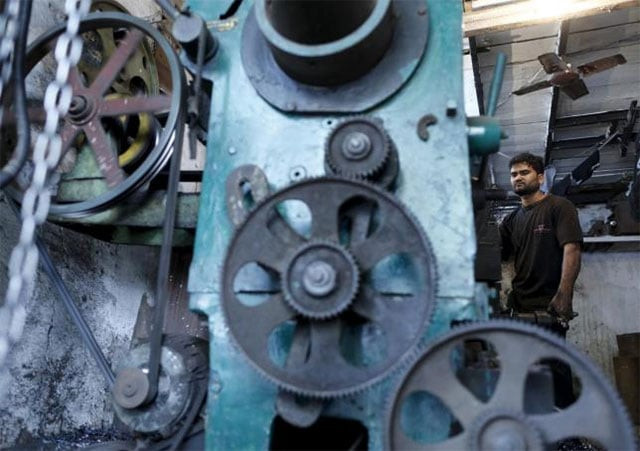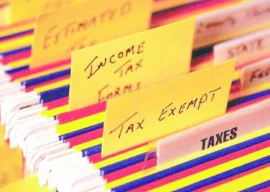
This is what happened in case of East Asian economies, such as South Korea, Taiwan, Singapore and Hong Kong, which successfully implemented export-led growth strategies.
In Pakistan’s case, however, even the first condition has not been satisfied, which has prevented the export sector from spearheading development efforts. It was towards the close of the 1980s that Pakistan switched over to the export-led growth from the import substitution strategy. Between 1990-91 and 2016-17, the country’s exports went up from $5.61 billion to $20.43 billion.
Ismail says under-invoicing exists, raises questions on trade data
The average annual export growth has been a paltry 5.8%. During the 1990s, exports grew on average 5.6% a year. During the 2000s, the average annual export growth accelerated to 9.9%. Between 2010-11 and 2016-17, average export growth of 1.94% was recorded.
The sluggish export growth also cast its pall over the overall economic growth. Between 1990-91 and 2016-17, the economy grew on average 4.5%. During the 1990s, GDP grew 4.6% a year. During the 2000s, the average economic growth marginally went up to 4.7%. Between 2010-11 and 2016-17, economic growth decelerated to 4.3%, according to the Pakistan Economic Survey data.
Many other countries, which embarked on export-led growth about the same time as Pakistan did have seen both their economies and exports,grow at a much faster pace. Chinese exports went up from $62.09 billion in 1990 to $2,097 billion in 2016, registering an average annual growth of 15.32%. During the same period, the Chinese economy grew on average 9.63%. Indian exports went up from $17.96 billion in 1990 to $264.40 billion in 2016 up by 11.82% a year. During the same period, the Indian economy grew on average 6.59% (World Bank data). Thus in both these countries, high economic growth was underpinned by robust export growth.
Another measure of export growth is the export-to-GDP ratio. Pakistan’s export-to-GDP ratio has come down from 15.53% in 1990 to 9.13% in 2016. As per World Bank data, during the 1990s, Pakistan’s average export-to-GDP ratio was 16.4%, which fell to 14.35% during the 2000s. Since 2010, the average export-to-GDP ratio has come down to 12.16%. Pakistan’s current export-to-GDP ratio of 9.13% is among the lowest in the region: Iran (22.40%), China (19.64%), India (19.17%), Sri Lanka (21.44%) and Bangladesh (16.64%).
From the perspective of export-led growth, it is important to look at two things in the main: one, does over the years, the composition of the export basket remain the same? Two, is export growth based on simple widening of production without changes in productivity of the factors of production?
Higher productivity means not only producing more output from the given resources but also producing the products, which better satisfy customer needs. The first factor is important, because the export-led growth process must include decreasing dependence on traditional exports and increasing dependence on value-added manufactures, particularly those which have a high growth potential in international market.
The second factor is important because without improvement in productivity, exports will find it difficult to successfully compete in foreign markets both in terms of price and quality. If the production function in exporting enterprises is not better than that in the enterprises producing for the domestic market, the export sector cannot serve as a catalyst for development.
Let’s look at Pakistan’s exports from the aforementioned perspective. According to the Pakistan Economic Survey, in 1989-90, the percentage share of primary products, semi manufactures, and manufactures in total exports was 20, 24, and 56 respectively. By the end of 2016-17, the export composition had changed as follows: primary products 15%, semi manufactures 12% and manufactures 73%.
Although the share of the manufactured goods in total export basket has considerably gone up, the export of manufactured products is heavily dominated by commodity-based manufactures. In 2016-17, the share of textiles and clothing (T&C) in total export of manufactures was 67.21%, followed by 3.94% share of the leather sector.
For several years, the T&C sector has accounted for less than 5% of the global trade. This means Pakistan is competing in a sector which has a very low share in international trade with little prospects for growth. Pakistan’s T&C exports are sold mainly to the low end of the market, which makes it even more difficult to bring in higher export receipts.
Pakistan’s share in global T&C exports is only 1.83%. On the other hand, the engineering sector, which accounts for nearly 60% of global trade, accounts for merely 1.17% of Pakistan’s total exports. The share of engineering products in total exports of China and India is 47% and 23% respectively.
Being deficient in competitiveness, the export sector continues to look for tax exemptions and subsidies at home and duty free market access abroad. Providing subsidies or tax exemptions to export enterprises is not a bad idea.
However, such support should be made conditional. It should be provided to only those enterprises which cut costs through more efficient production and management processes, or improve quality of the output through product upgrade and innovation. In the beginning of 2017, the government introduced a Rs180-billion export package spread over 18 months. The benefits to be accrued from the package were made conditional, and rightly so, on exporters showing at least 10% increase in exports over the previous year. However, on the insistence of the exporters the conditionality was withdrawn.
Pakistan’s trade deficit widens 14.3% to $29.8 billion
As development economists point out, what matters for the success of export-led growth is not simply creation of modern enterprises but modernisation as a process and as a set of values. Replacing hand looms with the state-of-the art machinery is significant. But more significant is presence of entrepreneurship, which provides for professional management, labour training, diffusion of decision-making within the enterprise, risk taking by venturing into new areas, or at least, experimenting with product design, and a total commitment to quality.
Pakistan’s export sector is markedly deficient in entrepreneurship, with the result that it is as efficient, or inefficient, and as innovative as the domestic sector is.
The level of Pakistan’s overall competitiveness is borne out by the country’s persistently low ranking on the Global Competitiveness Index, which is 115 out of 137 economies for 2017-18, compared with India (40), Iran (69), Sri Lanka (65), and Bangladesh (99). It is difficult for export-led growth to bear fruit in these circumstances.
The writer is a columnist based in Islamabad
The writer is a researcher at the Sustainable Development Policy Institute
Published in The Express Tribune, May 14th, 2018.
Like Business on Facebook, follow @TribuneBiz on Twitter to stay informed and join in the conversation.


















COMMENTS
Comments are moderated and generally will be posted if they are on-topic and not abusive.
For more information, please see our Comments FAQ